Spring training preview: American League East
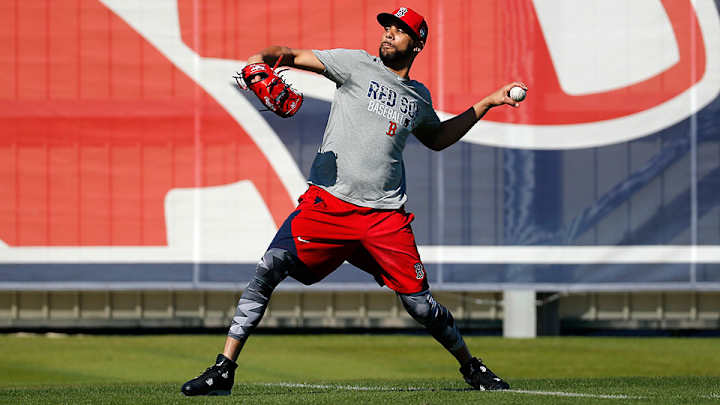
This week from Monday through Wednesday, SI.com baseball experts Cliff Corcoran and Jay Jaffe will break down what to watch for in each team's camp as part of our spring training preview by looking at the Big Change, Big Question and Big Prospect for all 30 clubs. Teams are listed by their order of finish from 2015. Note: The Big Prospect is a player who will be in big-league camp this spring but has not yet debuted in the major leagues. Today's preview: the American League East.
Spring training previews: NL East | AL Central | NL Central
Toronto Blue Jays
The Big Change: The beginning of the Shapiro Era
Though the announcement of his hiring came in late August, new club president/CEO Mark Shapiro didn't begin putting his stamp on the Blue Jays until after the team's postseason run—Toronto's first playoff appearance since 1993—had ended. Shapiro, who had spent the past 24 years rising through the ranks of the Indians' front office, got off to a rocky start when general manager Alex Anthopoulos shocked the industry by rejecting an extension offer; reportedly, Shapiro scolded him for trading so many blue-chip prospects amid a successful midseason makeover that brought in David Price, shortstop Troy Tulowitzki, centerfielder Ben Revere and others who aided the playoff push.
Eventually, Shaprio brought Ross Atkins over from the Indians (where he had most recently served as president of player personnel) to serve as GM; that made fewer waves than the new president's declaration that replacing the Rogers Centre artificial turf with grass as part of the venue's renovation wasn't a top priority. For all of that, the Jays' off-season ran fairly smoothly, and the fan base has been at least somewhat edified by rumblings that the team will attempt to retain pending free agents Jose Bautista and Edwin Encarnacion. The expectation is that the powerful offense will fuel another run at the AL East flag.
The Big Question: Can Marcus Stroman front this rotation?
Price is gone to the Red Sox, leaving a rotation that projects to include holdovers Marco Estrada and R.A. Dickey, free-agent returnee J.A. Happ and hopefully rotation-to-bullpen-to-rotation convert Aaron Sanchez. None of those pitchers is likely to give the team ace-caliber work, which puts a lot on the shoulders of Stroman, who completed an unprecedented in-season comeback from a torn ACL last year by making four regular-season starts and another three in the postseason.
The 30: Ranking every MLB team for 2016 as spring training begins
There's little doubt that the 24-year-old Stroman is a talented pitcher: Including his 2014 rookie season, he owns a 3.31 ERA and 2.96 FIP at the major league level. The totality of that workload is just 157 1/3 innings, however, and while he allowed just 1.67 runs per nine in his September cameo, his strikeout rate dropped to 6.0 per nine from 7.4 per nine as a rookie. That appears to have been part of a conscious effort to generate contact—and specifically ground balls—earlier in the count. As I noted last October, via Brooks Baseball, where Stroman threw four-seam fastballs 35.9% of the time and sinkers 18.3% of the time in 2014, the balance shifted to 7.3% four-seamers and 41.0% sinkers, with his rates of throwing sliders and changeups more than doubling. His ground-ball rate rose from 53.8% to 64.0%, and his pitches per plate appearance fell from 3.90 to 3.59.
There's little doubt the approach can work well enough to survive at the major league level, but will it be enough in a rotation that's banking heavily on Estrada's 2015 breakout and Happ's retention of the gains he made during his late-season stay in Pittsburgh? Beyond the potential for an improved infield featuring Tulowitzki instead of Jose Reyes, the real question is Stroman’s workload. Beyond the doubts based upon his size (5'8", 180 pounds) is the reality that his professional high for innings is just 166 1/3, set in 2014, whereas he threw just 46 1/3 last year. It's asking a whole lot for him to provide at least 180 innings of quality work without fatigue becoming a factor.
The Big Prospect: Anthony Alford, OF
Last year, the Blue Jays placed four players on prospect lists, namely Sanchez and outfielder Dalton Pompey, who both saw enough time in the majors to exhaust their rookie status, as well as starters Jeff Hoffman and Daniel Norris, the key pieces of the Tulowitzki and Price deals, respectively. This year, the Jays have only one ranked prospect: 21-year-old Anthony Alford, a third-round 2012 pick who spent last year at two Class A stops, hitting a combined .298/.398/.421 with 27 stolen bases. He’s been invited to big-league camp, but his lack of upper-level experience mans that he likely won't make his MLB debut until 2017,
Alford, whose highest ranking is 25th on Baseball America's list, is a former college football player (a quarterback at the University of Southern Mississippi and a safety at Ole Miss after transferring) who is coming off his first baseball-only season. His plus-plus speed and good arm strength make him a natural centerfielder, and while he lacks power, he has a surprisingly advanced hit tool given his inexperience. Quoth Baseball Prospectus' Ezra Wise: "With a relatively uncomplicated swing that features a shallow load and a direct bat path, Alford makes consistent, hard line-drive contact to all fields, and possesses an advanced feel for the zone."
With defensive whiz Kevin Pillar in centerfield and Pompey set to battle Michael Saunders in left, there's no rush for Alford's arrival, and to be fair, the hype may still be premature given that he's about to get his first taste of the high minors. Still, by next year, the Jays could have an interesting surplus to sort through in the outfield.
The SI Extra Newsletter Get the best of Sports Illustrated delivered right to your inbox
Subscribe
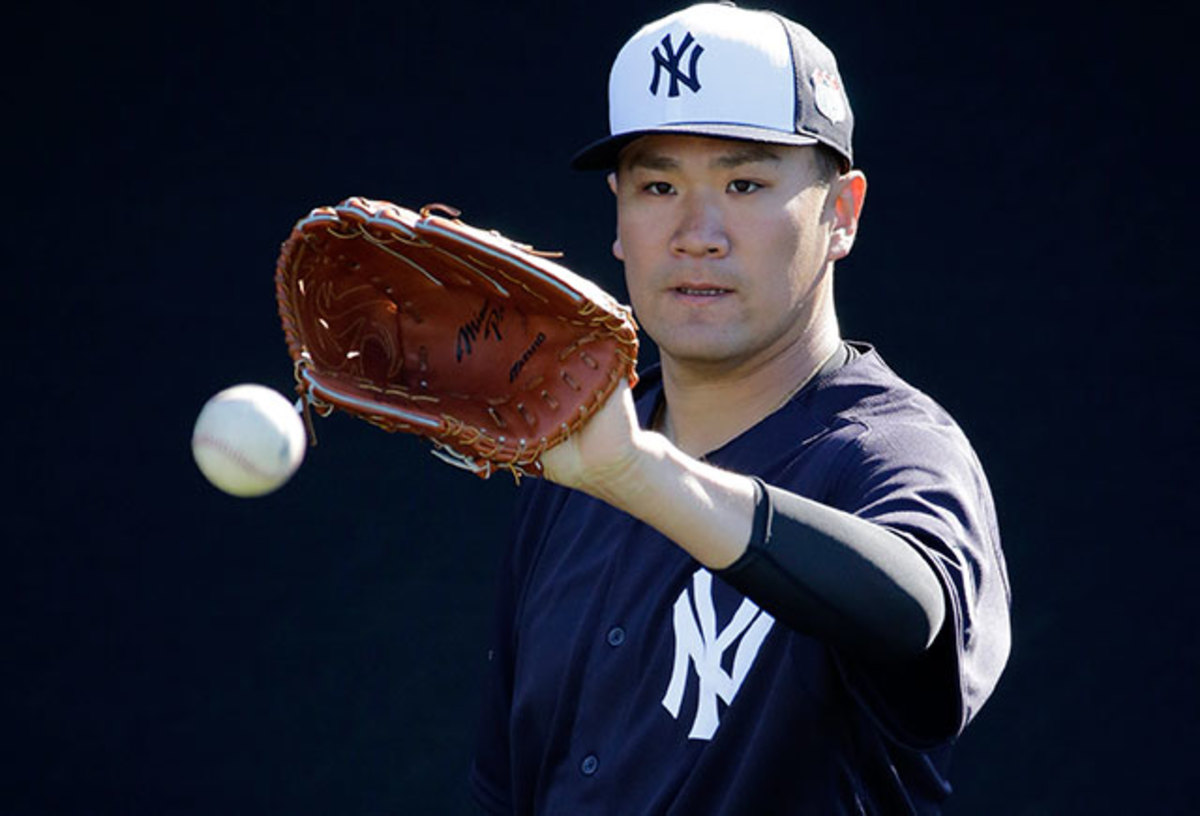
The Big Change: New city, new position for Starlin Castro
Not surprisingly, the Yankees have had a difficult time replacing Robinson Cano since their longtime second baseman departed for Seattle following the 2013 season. In 2014 and ‘15, aged retreads such as Brian Roberts and Stephen Drew failed, and suspect prospects Jose Pirela and Rob Refsnyder were cast aside. This time around, general manager Brian Cashman opted to go younger, trading swingman Adam Warren for the going-on-26-year-old Castro.
Circa 2011, the sky appeared to be the limit for Castro, who earned All-Star honors and collected 207 hits, but he's had just one good season out of the past three, hitting a combined .265/.305/.383 for an 89 OPS+ and playing himself off of shortstop. That said, Castro took well to a late-2015 move to the keystone, and he's relatively inexpensive and particularly youthful by New York standards. Given so much baggage from his six seasons in Chicago, the change of scenery could be beneficial, and the bar to clear—a combined .223/.279/.403 batting line and -12 DRS from last year's pinstriped second-sackers—is low.
The Big Question: How will the rotation fare?
For the second season in a row, the Yankees enter the year with an incredible amount of uncertainty in the rotation. Only one of last year's starters, CC Sabathia, even threw enough innings to qualify for the ERA title. Not only was his 4.73 mark nothing to write home about, but he also left the team during the final weekend of the regular season to enter a rehab facility to address alcoholism. Masahiro Tanaka, who was able to pitch through a small tear in his ulnar collateral ligament, nonetheless was limited to 24 starts by forearm, wrist and hamstring injuries, then underwent off-season surgery to remove a bone spur. Nathan Eovaldi didn't pitch after Sept. 5 due to elbow inflammation. Michael Pineda was rocked for a 5.80 ERA and 1.8 homers per nine in the second half, missing a month due to a forearm strain. Ivan Nova returned from Tommy John surgery but was cuffed for a 7.25 ERA with 2.0 homers per nine over his final seven starts. Rookie Luis Severino was brilliant, posting a 2.89 ERA in 11 turns, but his shaky peripherals (1.3 HR/9, 4.37 FIP) suggest it will be hard to sustain such a performance over a full season in the majors.
Spring is here! Nine key questions as camps open
Having eschewed Price and other free agents—not just the big game but all major league free agents, as they didn't sign a single one—the Yankees somehow need this motley assortment to come together into a contention-caliber unit. It's not hopeless, though. The upsides for Tanaka, Severino and Pineda have been on display intermittently over the past two seasons, and Sabathia did pitch well late in the year once he was fitted for a new knee brace. What’s more, the trio of setup men Dellin Betances and Andrew Miller and newly-acquired closer Aroldis Chapman should shorten games for this shaky crew. Still, it's going to take several things going right here for the Yankees to contend.
The Big Prospect: Aaron Judge, OF
Prospects simply don't come much bigger than the 6’7”, 275-pound Judge, a 2013 supplemental first-round pick out of Cal State-Fresno who hit .255/.330/.448 with 20 homers in a season split almost equally between Double A and Triple A. While all of the major prospect lists include the going-on-24-year-old rightfielder, opinions are mixed with regards to his ranking: He's 18th on Baseball Prospectus' list, 31st on MLB.com's list, 36th on that of ESPN and 76th on that of Baseball America.
Power is Judge’s calling card, and while some see a swing long enough to create concern about his strikeouts (26.7% in 2015) and to depress his batting average, MLB.com noted, "He focused on working counts and the middle of the field during his 2014 pro debut, but he started to turn his righthanded swing loose more often last season. Depending on how much Judge balances power versus discipline, he could be a higher-average hitter with 20 or so homers per season or more of a masher who delivers 30-plus long balls."
Beyond that, Judge is athletic and has a strong arm, suggesting that he'll be an above-average defender. He doesn’t figure to break camp with the Yankees, who have going-on-39-year-old Carlos Beltran entrenched in rightfield, but given the veteran’s propensity for injuries—he's played just 242 games over the past two seasons—the rookie may have an opening. Time could open for Judge as the backup DH as well, once you incorporate the possibility of 40-year-old Alex Rodriguez being out of the lineup for some reason or another and Greg Bird’s season-ending shoulder surgery removing him from that role.
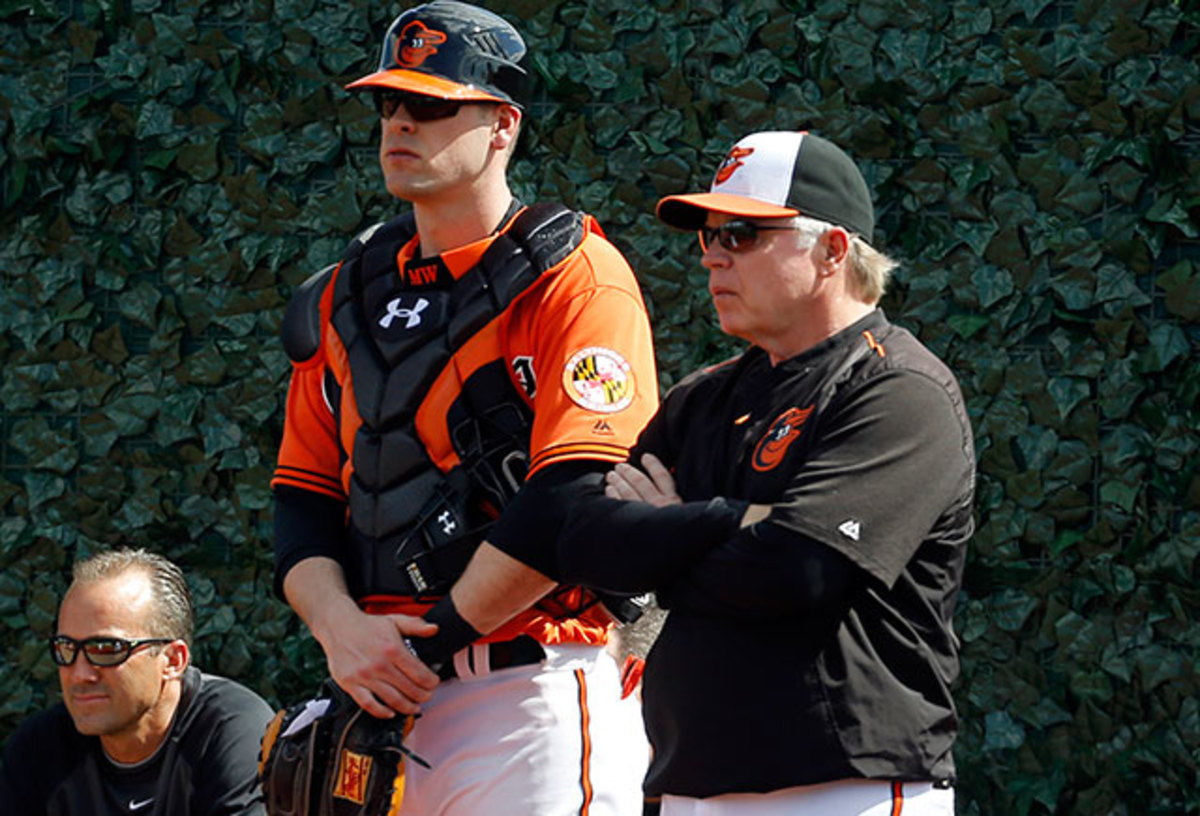
The Big Change: Big spending
The Orioles’ payroll has been climbing incrementally since the team emerged as contenders, from $84.1 million in 2012 to $119 million last year (all figures from Cot’s Contracts, using Opening Day payrolls), but at the moment, they’re on a veritable spending spree. A year after letting leftfielder Nelson Cruz, rightfielder Nick Markakis and reliever Andrew Miller depart via free agency, they were surprisingly aggressive in retaining first baseman Chris Davis, reliever Darren O’Day and catcher Matt Wieters. Davis signed a seven-year, $161 million deal with some deferred money lowering the present-day value to $147.7 million. O'Day, who has become manager Buck Showalter's most reliable weapon out of the bullpen, signed a four-year, $31 million deal. Wieters, who had an uneven return from Tommy John surgery, became part of the first wave of players to accept a qualifying offer, postponing the final reckoning with regards to whether the former top prospect is worth a major long-term investment.
Owner Peter Angelos's checkbook is still open, too. Baltimore just inked righthanded starter Yovani Gallardo to a three-year, $35 million deal, costing the team a first-round pick, and the O's are said to be in discussions with outfielder Dexter Fowler as well, which would push their payroll over $150 million.
The Big Question: Will Kevin Gausman step forward?
Even with Gallardo, the Orioles' rotation lacks anything resembling an ace. With the free-agent departure of Wei-Yin Chen to the Marlins, Gallardo (3.24 ERA, 124 ERA+) and Ubaldo Jimenez (4.11 ERA, 101 ERA+) stand as the only starters who prevented runs at a better-than-average clip in 2015. Meanwhile, Miguel Gonzalez (4.91 ERA, 1.5 HR/9) battled injuries, struggled to keep the ball in the park and regressed to the spot where his peripheral stats suggested he was bound. Chris Tillman (4.99 ERA, 4.45 FIP) more or less did the same, albeit without a trip to the disabled list.
Winter Report Cards: Final grades for American League teams
Gausman, the No. 4 pick of the 2012 draft and a top-20 prospect heading into ‘14, appeared primed to step to the forefront last year after two seasons with the training wheels on, with a projected target of 180 innings. But Baltimore sent him to the bullpen to start the season, and after an unimpressive first month in which he totaled just 12 innings, he hit the disabled list with tendinitis in his shoulder, knocking him out of action for six weeks. Upon returning, Gausman spent the next month being yo-yoed between Triple A and the majors, and while he at least managed to remain among the starting five in the second half, he struggled to keep the ball in the park. He finished the year with a 4.25 ERA (98 ERA+) and 4.10 FIP, with his strong strikeout rate (8.3 per nine) offset by an ugly homer rate (1.4 per nine) in just 112 1/3 innings, plus another 14 frames at Norfolk.
All of that suggests that the 25-year-old Gausman may well be on a shorter leash again, with 200 innings out of the question and 180 a stretch given the way the team has handled him. Whatever his workload, the O's need him to realize his potential given the modest quality of the surrounding starters, and they need to make his every inning count, both for the sake of the 2016 squad and for the longer term. The Dan Duquette/Buck Showalter regime's unimpressive track record in turning blue-chip pitching prospects—Tillman, Jake Arrieta, Brian Matusz, Zach Britton, Dylan Bundy and Hunter Harvey—into capable starters has gone on too long. With the O’s having punted their top draft pick three years out of four via the signing of qualifying offer free agents, it could be awhile before they have another shot with a pitcher of this caliber.
The Big Prospect: Chance Sisco, C
Given that Harvey missed all of last season with a fractured fibula and then a strained flexor mass, and that Bundy (who's out of options this spring) totaled just 22 innings in Double A, it's worth taking a closer look at Sisco, a lefty-swinging catcher who turns 21 on Feb. 24. Ranked third among the team's top prospects by both Baseball America and Baseball Prospectus and first by ESPN (which also ranked him 81st in the majors), Sisco was a second-round 2013 pick out of a Corona, Calif., high school, where he primarily played shortstop before moving to catcher full time upon turning pro.
Though his power is fringy at best, Cisco has shown a plus hit tool, with the ability to command the strike zone and to put the ball in play to all fields. He's made progress with his receiving, with ESPN's Keith Law noting that his glove his more developed than his arm. His durability is something of a concern, as minor injuries have limited him to just 148 games behind the plate over the past two seasons. In 2015, he hit a combined .297/.376/.415 with six home runs split between high A ball (75 games) and Double A (20 games). He'll be in the big club's camp to start the spring, and while he's unlikely to see significant time in Baltimore this season, his progress could lessen the sting if Wieters departs at the end of the season.
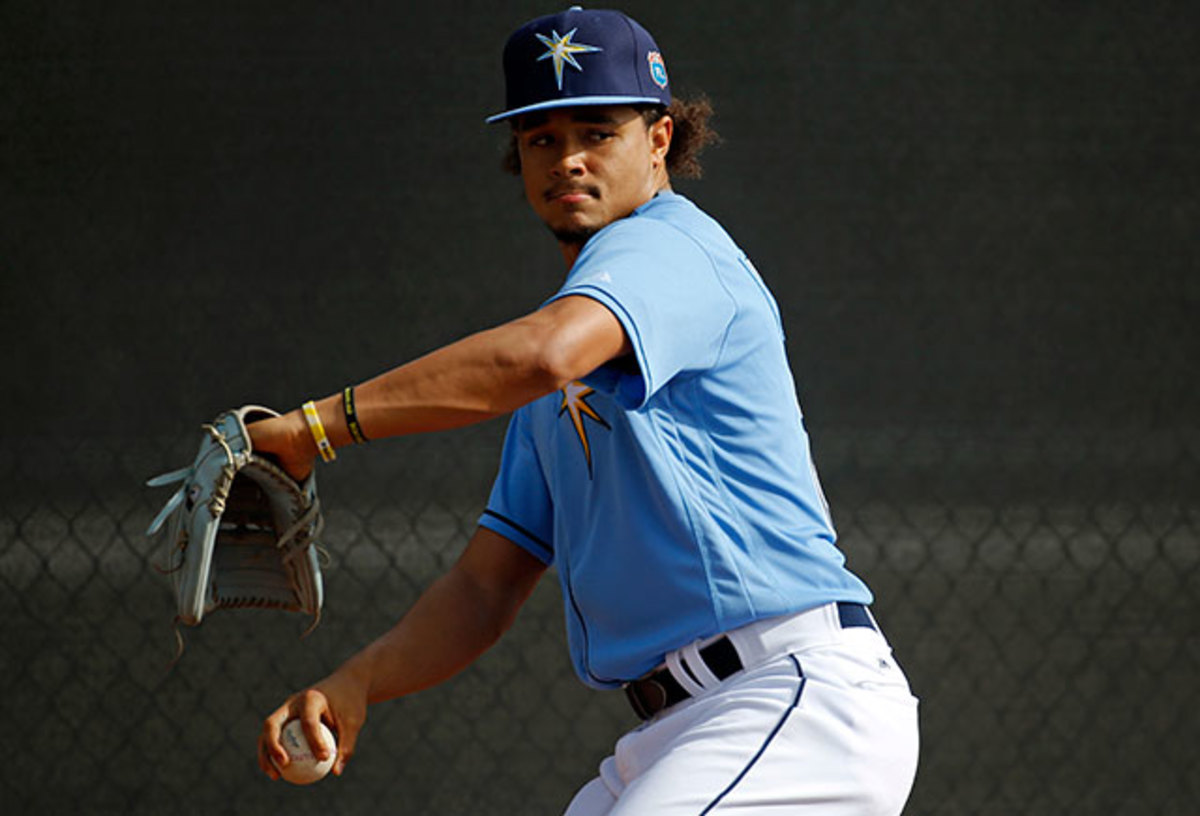
The Big Change: The Post-Jake McGee era
The Rays didn't have a great off-season. Cliff Corcoran gave them a D+ in their Winter Report Card, citing their failure to add a single major league free agent and the modest impact of their six-player deal with the Mariners. He revised their grade to a C- in the wake of the signing of utility man Steven Pearce and the acquisition of outfielder Corey Dickerson in a four-player deal that sent away McGee. The most striking thing about their moves, however, is that, at the time he was dealt, the 29-year-old McGee was both the franchise's leader in games pitched (297, one ahead of reliever Joel Peralta) and the organization’s longest-tenured player, having been drafted in the fifth round in 2004, two years before third baseman Evan Longoria and outfielder Desmond Jennings.
McGee wasn't a high-impact player, but as a staple first of top prospect lists (he made the Baseball America and Baseball Prospectus Top 100s three times from 2007 to '11) and then of the bullpen, he was a link to the franchise's emergence into relevancy, and a solid contributor. Now, he's yet another reminder that nothing is forever, particularly in Tampa Bay.
The Big Question: Can the Rays' newcomers boost an offense that ranked second-to-last in the league in 2014?
The 2015 Rays were very good at run prevention, ranking second in the league at 3.96 allowed per game, but they were dismal on the other side of the ball, finishing second-to-last at 3.98 runs per game. Of their four regulars who provided above-average offense (an OPS+ greater than 100), two—catcher John Jaso and shortstop Asdrubal Cabrera—departed via free agency. Cabrera has been replaced by Brad Miller, whose park-adjusted offensive contributions were right around the same level (106 OPS+ for Miller, 105 for Cabrera). The new guy is four years younger (26 as opposed to 30), though, suggesting further upside with the bat along with better defense. So there's that.
Year After Effect: Five pitchers at injury risk
It's not entirely clear yet how lefties Dickerson (118 OPS+ and 10 homers with Colorado) and Logan Morrison (92 OPS+ and 17 homers with Seattle) and righty Pearce (91 OPS+ and 15 homers with Baltimore) will fit into the lineup, but it's fair to assume that manger Kevin Cash will continue to use platoons. For as productive as Jaso was (132 OPS+ in 216 plate appearances), he represented just a small slice of playing time, though Tampa's designated hitters as a group—including the long-gone David DeJesus, the more recently departed Joey Butler and just about everybody who swung a bat for the team at one point or another last year—hit a robust .277/.340/.453 for a split OPS+ of 107. On the other hand, first baseman James Loney (89 OPS+) was typically weak, DeJesus and company weren't much to write home about in leftfield (95 sOPS+), and Steven Souza (98 OPS+) underperformed in right. So the bar is low in several places where the newcomers might slot in.
For what it's worth, Baseball Prospectus' PECOTA system forecasts the Rays to score 713 runs, 69 more than in 2015, and not only to be a middle-of-the-pack team offensively but also to win 91 games, more than any AL team except the Indians. FanGraphs, on the other hand, projects them to improve by about 35 runs on the offensive side but score fewer runs than any other AL team and win 82 games. As with every other projection system, it looks like the Rays will actually have to play the games for the answer to be clear.
The Big Prospect: Blake Snell, SP
For all the uncertainty above, the Rays do have a bona fide pitching prospect on their hands in 24-year-old Snell, a 6'4" lefty who was a supplemental first-round pick back in 2011. Snell, who has ranked among the top 21 prospects on the major lists with a high of 12th on Baseball America's, posted eye-opening numbers in a 2015 season in which he climbed from high A Ball to Triple A. His 1.41 ERA was the lowest of any starter in the minors, and he complemented that with 10.9 strikeouts and 0.5 homers per nine in 134 innings, including a 46-inning scoreless streak to start the season. The performance netted him MLB Pipeline Pitching Prospect of the Year honors.
Baseball Prospectus' Chris Crawford raves about Snell's 92–95 mph fastball, calling it "borderline plus-plus because of its movement [with] more life than any lefthanded pitching prospect in baseball." Snell's arsenal also includes a plus slider that he can locate for strikes or get righties to chase, and a changeup that flashes plus. His control is still an issue, but his 3.6 walks per nine across three levels, including 2.6 per nine in 44 1/3 innings at Triple A Durham, represented a significant step forward. The Baseball Prospectus 2016 annual adds that Snell's "biggest difference was an increase in maturity, preparation and openness to coaching."
Snell isn't slated to begin the year in the Rays' rotation, which is projected to include Chris Archer, Jake Odorizzi, Drew Smyly, Erasmo Ramirez and Matt Moore. The group isn't bulletproof, however. Smyly made just 12 starts in 2015, opting to pitch through a partially torn rotator cuff, and Moore struggled in a mostly dreadful partial-season return from Tommy John surgery, though his 1.35 ERA over his final four starts offered hope for a rebound. The likelihood of Snell pitching for the big club at some point appears high, with the Tampa Bay Times' Marc Topkin suggesting he could be down on the farm for as little as 20 days (to delay his free agency a year), with Ramirez possibly the odd man out.
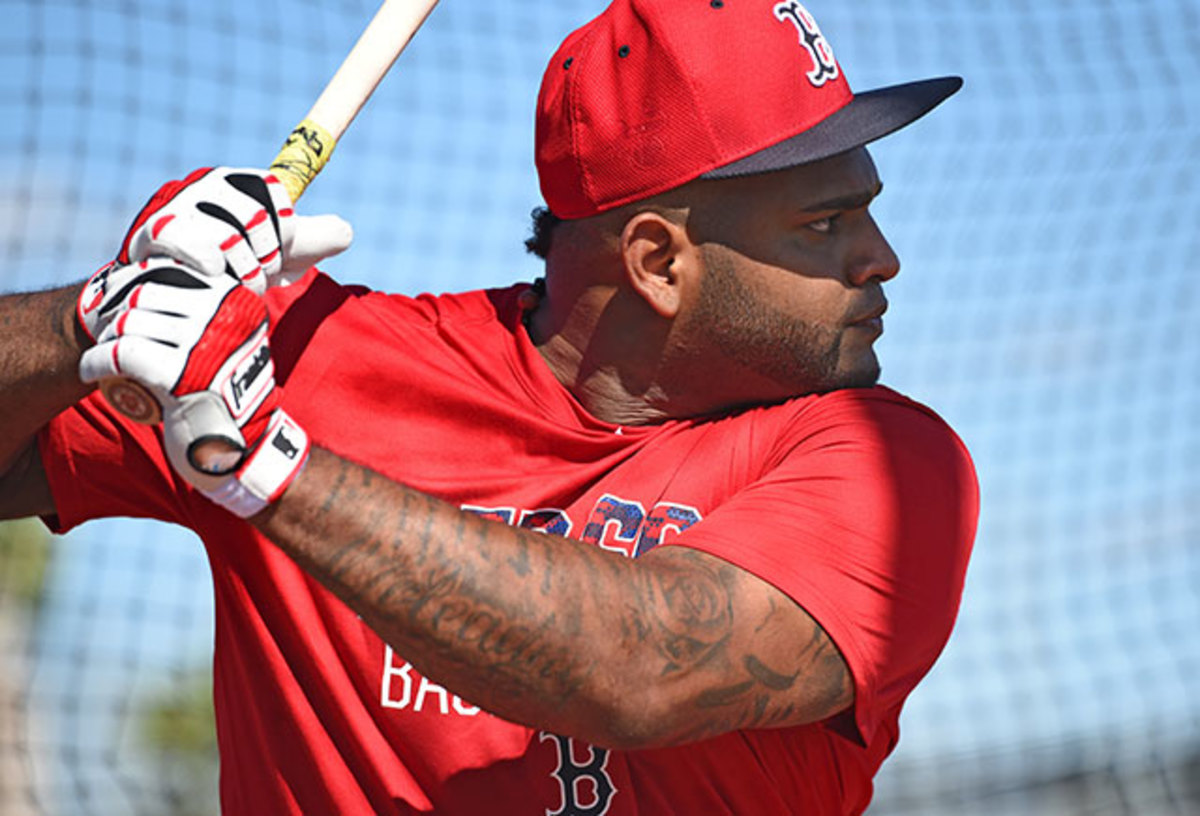
The Big Change: The new boss
Once it became apparent that the Red Sox were bound for their third losing season out of four, owner John Henry brought in recently dismissed Tigers general manager Dave Dombrowski as president of baseball operations in mid-August, leading to general manager Ben Cherington's resignation. In his first off-season, Dombrowski has put his stamp on the team via a pair of blockbuster moves, trading four prospects to acquire closer Craig Kimbrel from the Padres and then inking lefty starter David Price to a record-setting, seven-year, $217 million deal. In doing so, Dombrowski gave a team that ranked 13th in the league in rotation ERA (4.39) last year the ace it has lacked since Jon Lester was traded back in 2014. The new man in charge hasn't made any other major changes, but with a deep stockpile of young talent in both the minors and on the 25-man roster, another eye-opening move isn't out of the question.
The Big Question: What will Hanley Ramirez and Pablo Sandoval contribute?
Last winter, Cherington and company bet heavily on a pricey pair of free agents—four years and $88 million for Ramirez, five years and $95 million for Sandoval—who turned out to be the Toxic Twins. Ramirez, tasked with converting from shortstop to leftfield, hit just .249/.291/.426 with 19 homers and a 90 OPS+. Not only did he battle injuries in both shoulders, but he was also so awful in the outfield that some wished the Green Monster had swallowed him whole; his -19 Defensive Runs Saved dipped his "value" to -1.3 Wins Above Replacement (baseball-reference.com version). Sandoval, meanwhile, hit for a career-worst 76 OPS+ on a dismal .245/.292/.366 line and was also dreadful afield (-11 DRS) en route to -0.9 WAR. Inevitably, he couldn't escape questions about his always-suspect conditioning, to say nothing of his short attention span. Not surprisingly, Dombrowski was unable to move either player this past winter.
Strike Zone podcast: Spring training preview, storylines to watch
With the outfield move a failure, the plan is for the 32-year-old Ramirez to become the team’s starting first baseman, at least until David Ortiz’s retirement opens up the designated hitter slot for 2017. If there's good news, it's that the departed Mike Napoli, the still-on-hand Travis Shaw and company set a very low bar last year, combining to hit just .228/.311/.419. A healthy Ramirez should surpass that, but it remains to be seen whether he can play passable defense; it's safe to assume he'll often yield to Shaw in the late innings.
As for Sandoval, while he was said to have slimmed down, the first photo of him this spring suggests that's an overstatement. Even with the prospect of a move to first base next year as Ramirez shifts to DH, Sandoval needs to reassert himself on both sides of the ball for this team to reach its ceiling.
The Big Prospect: Brian Johnson, SP
One wave of Boston’s young talent (centerfielder Mookie Betts, shortstop Xander Bogaerts, catcher Blake Swihart and starters Eduardo Rodriguez and Henry Owens) has graduated to the big league level. Another (infielders Yoan Moncada and Rafael Devers, starter Anderson Espinoza and outfielder Andrew Benintendi) remains a couple of years away from making an impact. That makes the 25-year-old Johnson—not to be confused with AC/DC's lead singer, for those who were otherwise about to rock—worth a closer look, as he could find himself in the club's 2016 rotation at some point. A supplemental first-round pick in 2012, the 6’4” southpaw came into last season ranked 82nd on Baseball America's Top 100 Prospects list and acquitted himself well in his first taste of Triple A, posting a tidy 3.19 ERA with 8.4 strikeouts per nine in 18 starts totaling 96 innings. He was knocked around in a spot start against the Astros on July 21, but the real downer was a season-ending bout of elbow inflammation in early August, preventing him from getting another look in September.
Johnson's raw stuff isn't terribly impressive on paper: He has plus command over a fastball in the 89–92 mph range, his curve is a potential plus pitch, and his changeup is at least average. As Baseball Prospectus’ Chris Mellen noted last year, he has a "strong pitchability and command profile" and "demonstrates excellent knowledge of craft" as well as "a high baseball IQ." With Price, Rick Porcello, Clay Buchholz, Rodriguez and Joe Kelly in Boston's starting five, Johnson is likely to start the year in Pawtucket, but injuries happen, and some of those pitchers have flopped before.
